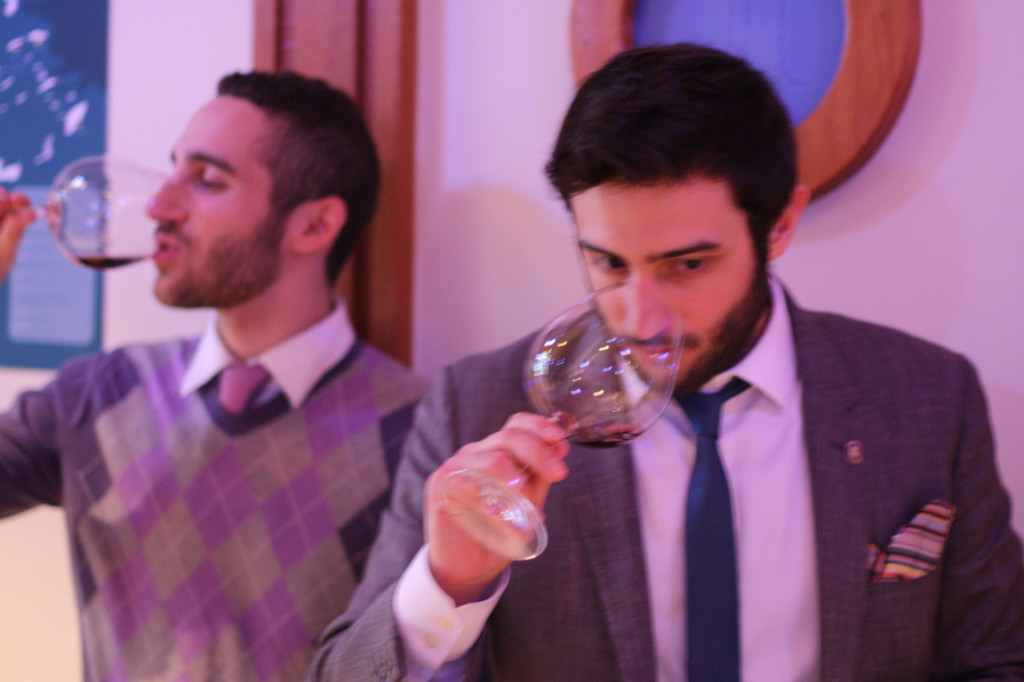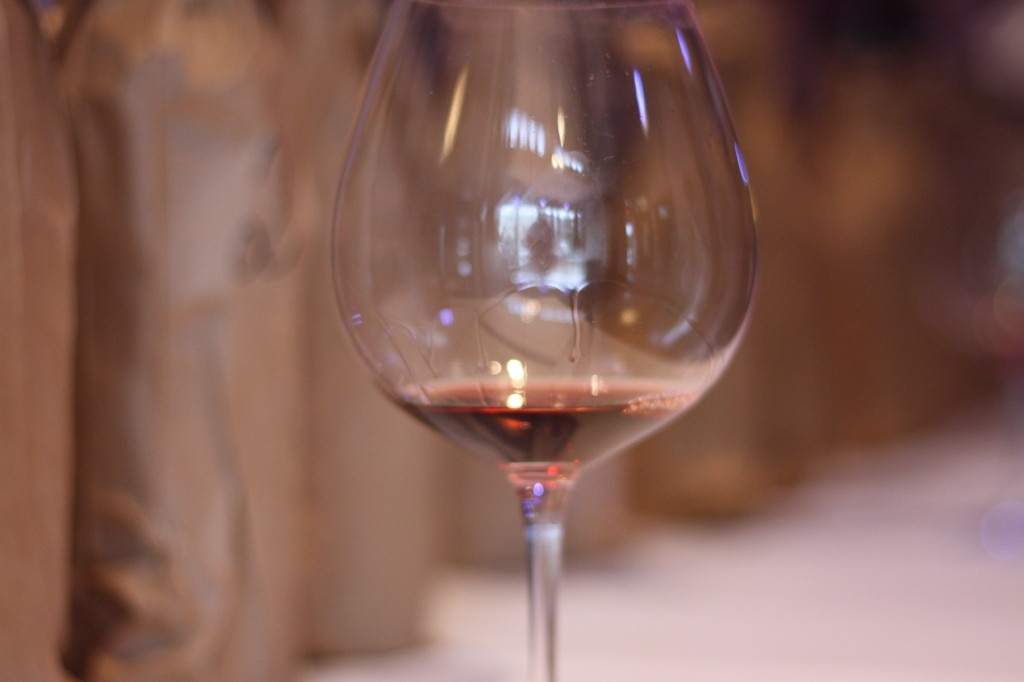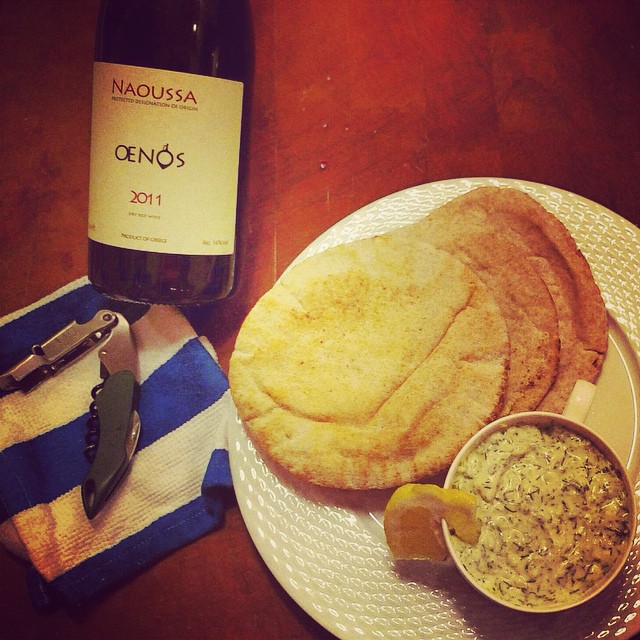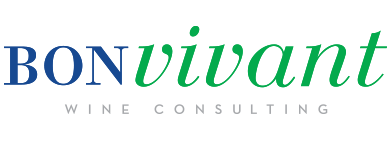Jun 5
Posted in:
Bang for Your Buck, Bon Vivant, DC events, Drink Well, Entertaining, Foodie, Seasonal Sips, Wine 101, Wine Facts, Wine Pairing, Wine Recommendations, Wine Reviews, Wine Tasting, Wineries and Vineyards
After spending an amazing summer studying in Greece and returning there for travel over the years, I’ve developed quite an affinity for Greek wines. The food and wine are such a tremendous part of the rich culture. I adore cooking and serving Greek food and wine for clients and friends alike!
Many are skeptics, having had a bad bout with the notorious pine resin-y retsina, but most leave converts.
I was so pleased to be invited to a blind tasting recently by two Greek brothers who run a wine import and distribution business here in DC. We blind tasted 22 Xinomavros and enjoyed a generous spread of authentic Greek food at Mourayo in DuPont Circle.

Jason and Nasos Papanikolao. “You captured us perfectly! He is always out front and I am always in the background drinking wine!” – Jason
The hard to pronounce varietal is an oft over-looked, but a delicious and bold red wine perfect for pairing with lamb and summertime grilling season! It has deep, dark fruit flavor profiles and a nice earthy balance. This wine is often best decanted before service. If you like big, tannic, full bodied red wines like Cabernet Sauvignon or Syrah, give this Greek stand out a try for a fraction of the cost!

One of my favorite things about Greek wine- and Xinomavro in particular- is the outstanding value. Below is one of my favorite wines for the money. It showed well at the tasting against pricier bottles, but is delicious at around $20/bottle! For a big, bold wine to pair with red meats, that’s a steal!

This bottle is a go to when enjoying lamb and delicious homemade tzaziki.
Do you ever enjoy Greek Wines?

Read More
I get asked a lot about various wine gadgets, but truth be told, I like to keep things pretty simple. Great stemware is nice and I’m more than partial to my favorite corkscrew, but one thing that I notice wine drinkers not doing enough of: decanting their wines.
 In addition to aerating wines that need a bit more time to open up, decanters are also ideal for older and unfiltered wines that may have accumulated a bit of sediment. Plus, they take a regular wine experience from everyday to festive in a flash!
In addition to aerating wines that need a bit more time to open up, decanters are also ideal for older and unfiltered wines that may have accumulated a bit of sediment. Plus, they take a regular wine experience from everyday to festive in a flash!
As we move into the colder months, people tend to drink bigger, bolder reds. Often, these are the most prime candidates for decanting. And while decanters CAN be pricey, they needn’t be! Check out some of my favorite elegant decanters that won’t break the bank- all are under $40!
Option 1
Option 2
Option 3
Do you decant your wines?
Read More
Lately, there seems to be a delegated day (and a corresponding hashtag) to just about everything- in case you didn’t mark it in your calendar, today is #TempranilloDay.
In light of this most important holiday I wanted to share 5 fun facts about this popular grape:
- While Tempranillo is most closely associated with the Rioja region of Spain, it is also grown domestically in California, Arizona and Texas.
- Spanish Tempranillo is categorized into 4 age categories: Cosecha, Crianza, Reserva and Gran Reserva. Typically, younger wines are more fruit forward and lighter in body, while older Tempranillos develop bolder, more earthy and nuanced characteristics.
- Younger wines should be consumed while young, while Reservas and Gran Reservas (the latter is only produced in outstanding vintages) are more suitable for aging.
- All Tempranillo is high in acid and medium bodied, making it an extremely versatile pairing wine. Try it with roasted pork or charcuterie for a can’t miss pairing!
- Tempranillo is the most widely planted grape in Spain.
What’s your favorite Tempranillo?

Read More
I’m taking a cue from my clients and giving a few pointers on some of the differences between Old World and New World wines this week. It’s a class that I teach a lot, and it’s a lot of fun to see people who “hate [insert wine variety]” realize they don’t in fact hate ALL of it!
To start, it’s helpful to know what we’re even talking about here. “Old World” is Europe (Turkey, Lebanon and others are also generally included in this category). “New World” is….everything else! America, South America, Australia, New Zealand, South Africa- they’re all New World.
Obviously there is quite a bit of variation in these regions, so take these generalizations with a grain of salt.

- New World wines are typically more fruit forward, whereas Old World wines typically exhibit more earthy elements respective of their terroir.
- New World wines are more typically aged in American oak, which imparts more flavor than French or Hungarian oak.
- New World wine also tend to be a bit higher in alcohol than Old World wines.
- Some find the flavors in New World wines to be a bit more accessible, whereas Old World Wines are typically described as subtle or nuanced.
- It’s possible to find Old World style wines in the New World, and vice versa!
There’s no right or wrong preference- just as in art, wine is highly subjective and you should drink what you like. Just remember to branch out sometimes- you just may discover that that wine you thought you hated is more about the region than the grape!
Do you prefer one style over the other?

Read More

Although many reach for heavy red stand-bys like Cabernet Sauvignon and Bordeaux, I have a few lesser known favorites that are perfect for warming up in front of the fire!
Fortified Wines
This is the time to bring out your fortified wines– Sherry, Port and Madeira. Although there is huge variation within the category of fortified wines and they can get expensive quickly, there are delicious bottles in the $22-$25 range.
I recently tried Baco de Elite Olorosso Sherry, a medium dry sherry with toasted walnut notes. Derek Brown’s Mockingbird Hill is a great place to visit if you want to learn more about sherry! I’m also partial to Dow’s Boardroom Tawny Port for its caramel notes and lighter finish than Ruby Ports.
Forget budget Madeira and just splurge. It’s worth every penny! For a special treat, visit The Jefferson Hotel in DC, which houses the largest Madeira collection in America. Ask Jen, the Sommelier, or Ivan, an outstanding bartender at the intimate Plume bar, for a recommendation!
Tannat
Although this grape is grown primarily in Uruguay, it was originally a French varietal. This is definitely one to decant and you will be amazed at how a Tannat will open up and develop as it is exposed to air! I recently poured Bouza Tannat at a private wine tasting, and it’s chocolatey notes and full body were a crowd pleaser. It’s not a grape you see every day, but if you like super full bodied reds, this is one worth trying! Tannat tends to be very high in alcohol- hovering at around 15%- so sip accordingly!
Priorat
As mentioned in last week’s post, I adore red wines from this Spanish region. These powerful red wines are comprised of a blend of varietals including Garnacha, Carignan, Cabernet Sauvignon, Syrah, and Merlot. Try the Menut or Zaumau- both are spectacular wines that offer spicy red fruit notes and pack a powerful punch. They’re great to pair with your favorite hearty winter fare, as well!
Amarone
This Italian wine doesn’t come cheap, but is absolutely amazing when it’s cold outside. Made in the Veneto region of Italy, this full bodied, earthy red wine is made by letting the Corvina grapes dry out into raisins, heavily concentrating the flavors. Try Allegrini for a tried and true house that also makes an excellent “Ripasso” Valpolicella- frequently known as the “poor man’s Amarone”.
What is your favorite cold weather libation?
Read More







